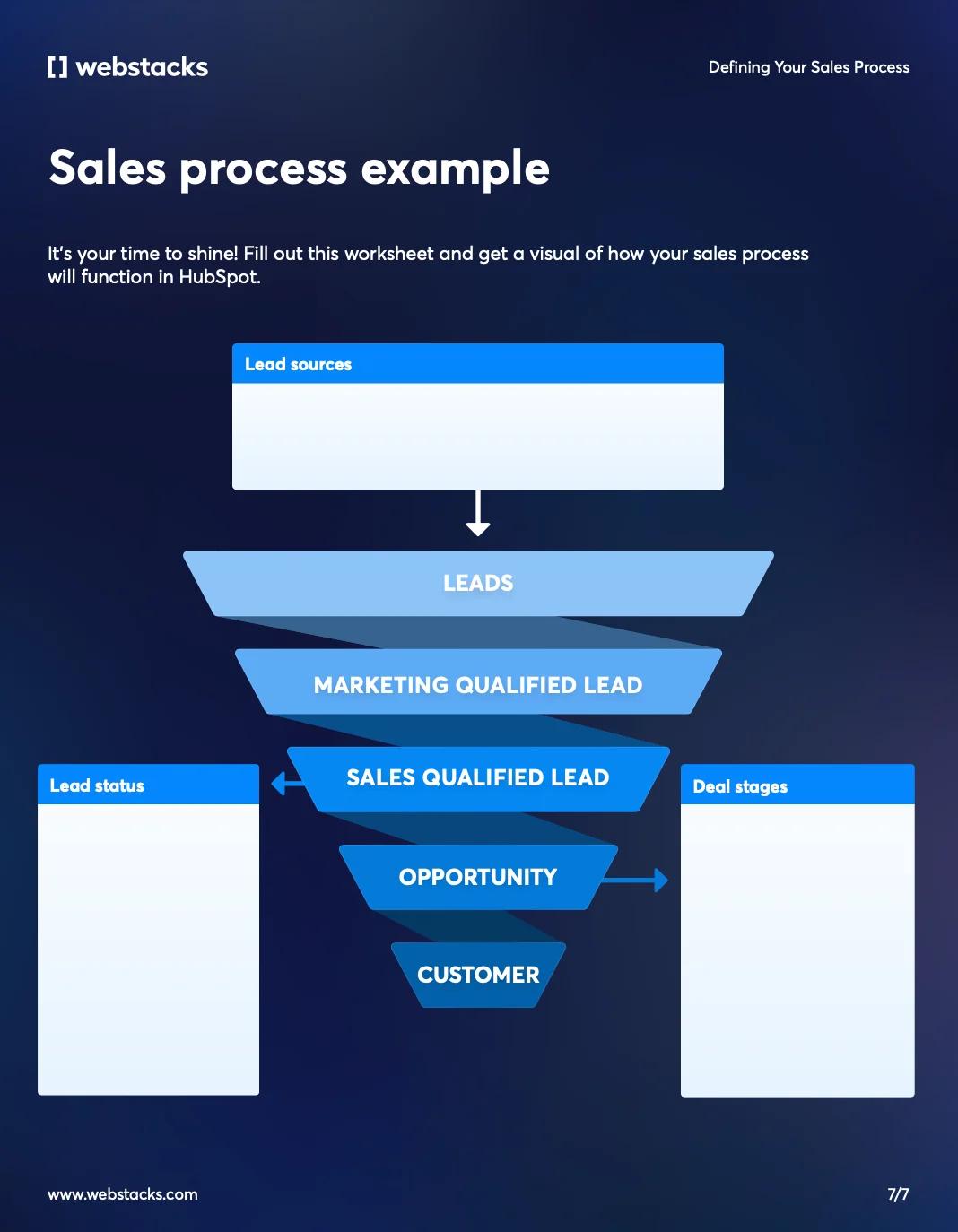I think it’s safe to say that not every “yearly marketing roadmap” goes exactly as planned. You may decide to skip a certain campaign, pivot when you fall short, or follow the shifting tides of the business.
This is all to say that adaptation is completely normal, but change is best when you are operating atop a sound foundation.
When it comes to B2B website strategy, we have plenty of innovative ideas and tactics to grow your website – we cover 35 of them in our B2B Website Recipes Guide here!
However, we want to take a step back and share four high-level strategies (or almost principles) that should be at the core of your website marketing. If you want to scale your efforts and see a significant impact on the business's bottom line, you must keep these strategies at the heart of everything you do.
1. Treating the Website as a Product
In B2B companies, treating your website as a mere digital brochure is an outdated philosophy. To stay ahead, it's crucial to adopt a product-centric mindset when it comes to your website.
At Webstacks, we view the website as a product – it is an extension of your organization’s offerings. To stay at the forefront of your industry, you must always be updating, improving, and expanding the website, just as you do with your products.
This means aligning your website closely with your business objectives, constantly creating new and engaging content for your visitors, and getting the most out of your website through optimizations.
Establish website goals
Your B2B website strategy should be seamlessly integrated with your company's overarching goals. Whether it's generating qualified leads, driving online sales, or enhancing brand awareness, your website should be a strategic asset that supports your business objectives.
Regular reviews and adjustments will help ensure your B2B website design and B2B website development remain aligned with your evolving needs.
Constantly be creating
Complacency is the enemy of innovation when it comes to websites.
To stay relevant and captivate your audience, you must constantly strive to create new and engaging website experiences. This could involve updating your content, introducing interactive features, or even exploring emerging technologies like AI and interactive demos.
Identify more ways you can reach your audience.
Make the most of your efforts
Closely tracking key performance indicators provides valuable insights that guide your website optimization. Key B2B website metrics to watch include:
- Conversion rates: Measure how effectively your website turns visitors into leads or customers.
- User engagement: Track metrics such as time on site, pages per session, and bounce rate to understand how users interact with your content.
- Search engine visibility: Monitor your site's ranking and traffic from search engines to gauge your SEO efforts.
- Click-through rates (CTR): Assess the effectiveness of your calls to action and overall content strategy.
Regularly reviewing and refining your website goals ensures continuous performance improvement. Keeping your website updated is vital for optimizing both SEO and CRO metrics, helping you stay ahead of the competition and meet your business objectives.
Stay better than the rest
Keeping ahead of the competition requires continuous innovation. Keep a close eye on industry trends and analyze your competitors' strategies to identify what is and isn’t working for them.
Incorporating the latest advancements in web technology, design, and user experience can give you a distinct advantage. Regularly update your website to reflect these changes, ensuring it remains a cutting-edge tool that effectively supports your business goals.
By doing so, you not only maintain a competitive edge but also position your brand as a leader in the market.

2. Modernizing Your Website's Tech Stack

Enterprise Web Development
If you want to be at the forefront of B2B websites, you must invest in the modernization of your underlying website technology.
To support a progressive B2B website strategy, it is crucial to build a scalable and flexible website architecture that can adapt to changing business needs. All too many times, we see the tech stack become a constraint more than a strength.
Your rigid website ends up costing you in so many ways far beyond just the maintenance to keep it afloat. Slow loading times, disjointed UX, and uninspiring brand identity can all contribute to a giant opportunity cost.
If you’re serious about investing in your website, start by reevaluating your web development.
Composability is key
The foundation of your B2B website development should prioritize scalability and flexibility. This means investing in a composable foundation that allows your website to grow and evolve over time.
A content management system (CMS) is essential, as it can handle increased traffic, evolving content needs, and new tools or software integrations seamlessly.
Focusing on website scalability and flexibility helps future-proof your digital presence. An adaptable headless CMS ensures your B2B website stays agile and responsive to market changes, enabling continuous improvement and expansion of your online offerings.
In fact, 61% of companies reported an increased ROI after migration to headless CMS. This approach supports your current business needs and positions your website for long-term growth and innovation.
Fill the website toolshed
Alongside a scalable and flexible website technology stack, using a suite of essential website tools and website software is crucial for effective B2B website management.
These may include tools such as:
- Content management systems (CMS): Facilitate easy content creation, management, and publishing.
- Customer relationship management (CRM): Manage and analyze customer interactions and data throughout the customer lifecycle.
- Customer data platforms (CDP): Aggregate and analyze customer data for personalized marketing.
- User experience optimization tools: Enhance the user journey and improve overall site usability.
- SEO tools: Boost search engine rankings and drive organic traffic.
- Conversion rate optimization (CRO) tools: Increase the percentage of visitors who take desired actions on your site.
- Marketing automation solutions: Streamline marketing efforts and automate repetitive tasks.
- Analytics tools: Provide insights into website performance and user behavior to inform decision-making.
Embracing a progressive B2B website development approach and investing in a future-proof tech stack ensures your digital presence is positioned for long-term success. This strategic investment helps maintain a competitive advantage and allows your website to adapt and thrive amidst changing market conditions.
3. Optimizing Design for Users and Content Editors

Best Enterprise CMS Platforms
Building an effective B2B website must go beyond just creating a visually appealing interface.
Too many times, website teams only focus on design from an end-user perspective. But what about your content editors? They need to be able to quickly build pages and have an extensive library of components to create unique and engaging experiences.
Make your CMS team’s lives easier
Webstacks subscribes to the principles of modular web design, which treats the components of the websites like building blocks. This way, sections can easily be added, removed, and rearranged – all without the assistance of developers.
While the frontend of your website caters to your external audience, the backend CMS must be designed to meet the needs of your internal content editors. A strong, user-friendly CMS simplifies the process of creating, managing, and publishing content.
Invest in features like intuitive content editing tools, efficient media management, and seamless integration with your overall website technology stack. Design is just as important to your website visitors as it is to your team. Marketers need a scalable and robust design system to present content in the most effective way possible.
By striking the right balance between optimized UX and a streamlined CMS experience, you can create a B2B website that not only engages your audience but also empowers your team to maintain and enhance it with ease, driving long-term success for your business.
4. Feeding the Pipeline

Sales Process Worksheet
To effectively power your B2B website's lead generation and sales efforts, you need a strategic mix of top-of-funnel, middle-of-funnel, and bottom-of-funnel content.
Remember your purpose: create new business for the website. This means crafting compelling content that not only attracts new visitors but also converts prospects into leads for your sales team.
Aligning these complementary strategies and building out the complete funnel allows you to attract, nurture, and convert high-quality leads, ultimately driving sustainable business growth.
Ensure that your content strategy addresses every stage of the customer journey, providing value and driving engagement from initial awareness to final conversion.
TOFU content marketing
73% of B2B marketers use content marketing as part of their overall marketing strategy. At the top of the sales funnel, your B2B website's content marketing strategy should focus on educating and engaging your target audience rather than selling. The goal is to build a loyal, owned audience. Produce informative, valuable content that addresses their pain points and challenges.
TOFU content types to consider include:
- Blogs
- Interactive tools
- Podcasts
- Webinars
By positioning your brand as a thought leader and trusted resource, you generate awareness, drive prospects down the funnel, and get the conversion where it makes sense.
The ultimate aim is to build awareness, generate leads, and nurture them through your B2B website's lead nurturing process.
MOFU content/product marketing
In the middle of the sales funnel (MOFU), your content should bridge the gap between initial awareness and the decision-making stage. The focus shifts towards deeper engagement and education, helping prospects understand how your solutions can address their specific needs and challenges.
MOFU Content types to consider include:
- Ebooks
- Whitepapers
- Solutions pages
- Industry-specific pages
- Persona-specific pages
BOFU product marketing
As prospects progress down the B2B website's sales funnel, your product marketing efforts should take center stage. It's time to sell by being authoritative and compelling.
Invest the time and money it takes to create the best content in your industry. Highlight the unique value proposition of your offerings and drive conversion-focused actions.
BOFU content types to consider include:
- Product pages
- Competitor comparisons
- Case studies
- Demos
This bottom-of-funnel content should focus on showcasing how your solutions can solve your customers' specific problems and help them achieve their goals.
By aligning your B2B website's content marketing strategy with your product marketing strategy, you create a seamless and effective lead generation and nurturing experience for your prospects.
This alignment ultimately drives them through the sales funnel and converts them into loyal customers.
Conclusion
The success of your B2B website will hinge on your ability to implement a strategic, holistic approach. We encourage you take review our website from 30,000 feet and see where your website stands with these four strategies. What do you do well? What is holding you back?
Aligning your website strategy with your overall business objectives, constantly creating new experiences, and staying ahead of the competition are key to turning your B2B website into a powerful lead generation and growth engine for your digital marketing efforts.





